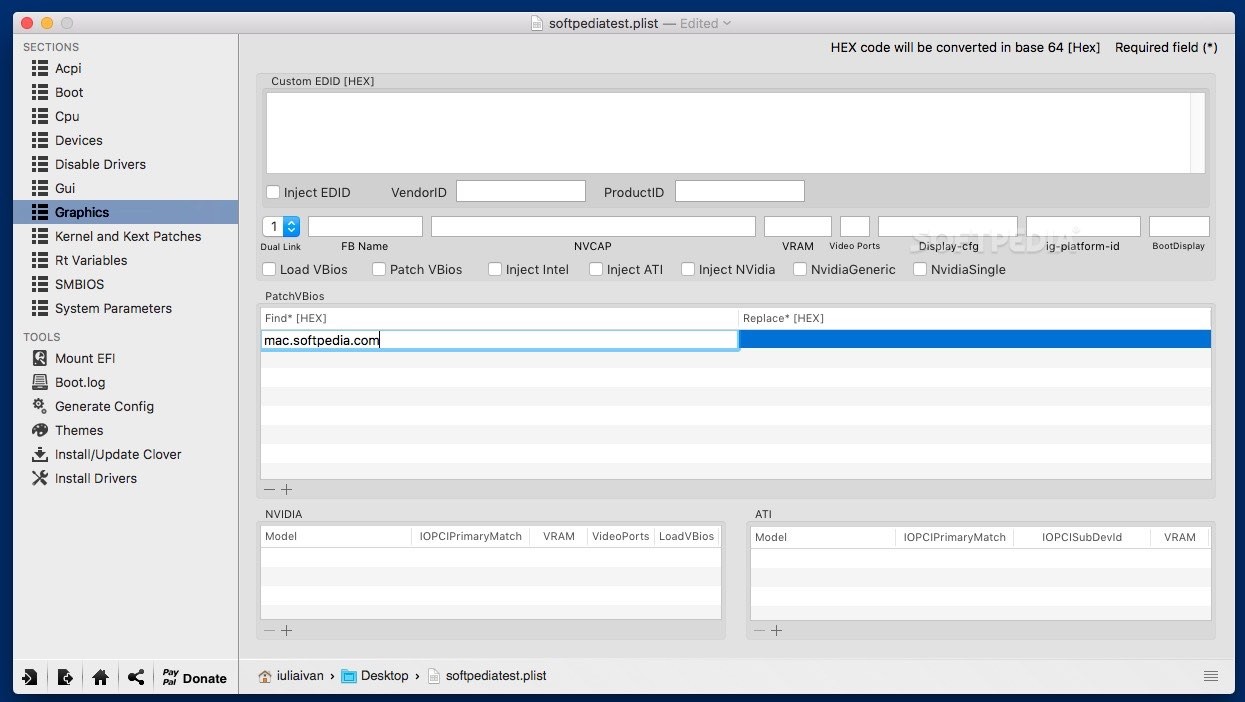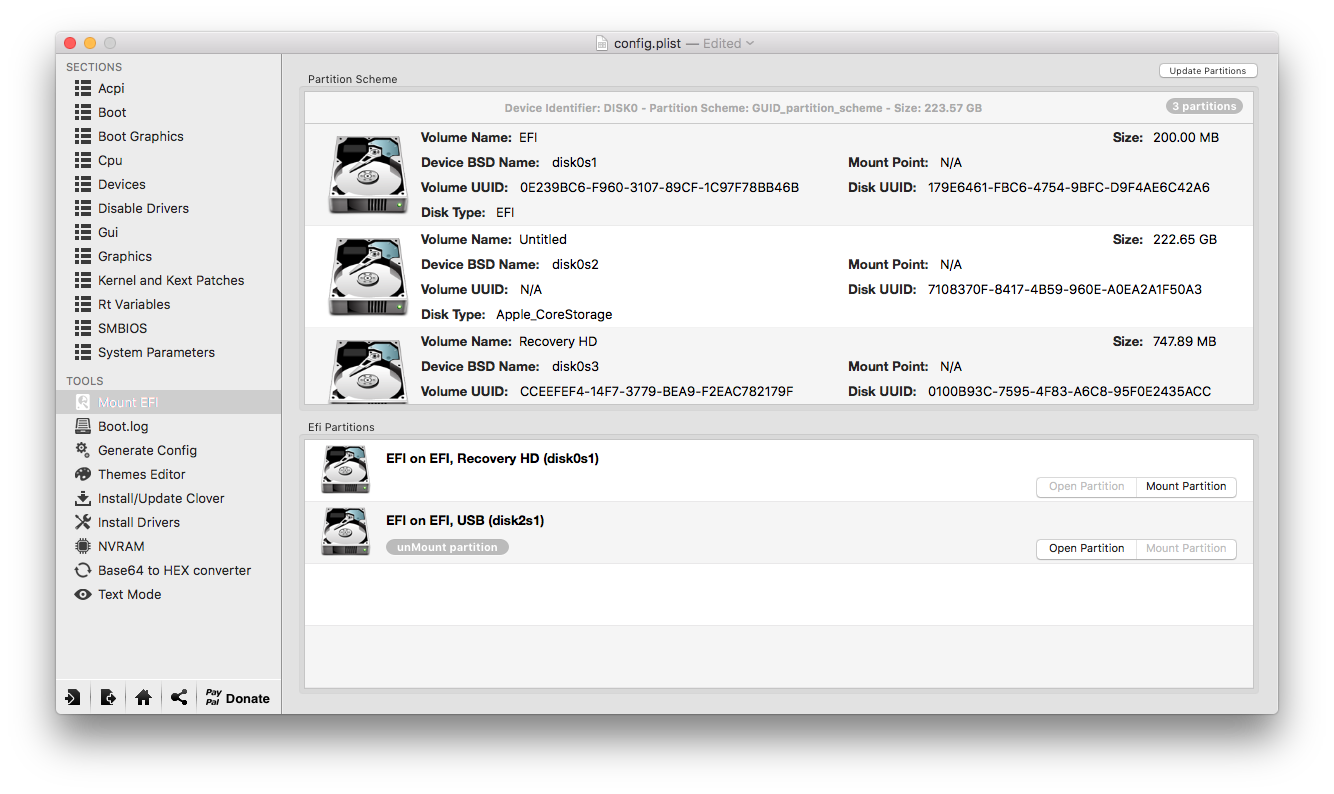
- #CPUID CLOVER CONFIGURATOR MAC OS#
- #CPUID CLOVER CONFIGURATOR INSTALL#
- #CPUID CLOVER CONFIGURATOR GENERATOR#
If you don’t do step 2 then for Sandy Bridge and newer CPU’s, AppleSMBIOS.kext will multiply any non zero values reported by SMBIOS table type 4 -> External Clock by 4. This currently has to be done in the source code and re-compile Clover. Clover does this if you set QPI to a string value of 0.Ģ - Set SMBIOS table type 4->ExternalClock to 0 (or 25Mhz as a real Mac).

To achieve that with Clover here’s what to do:ġ - Drop SMBIOS table type 132 for Sandy Bridge and newer CPU’s. Note: Real Mac’s report a hw.busfrequency = 100000000 Apparently this value only makes sense for Nehalems, the rest should use the formula stated above - or nothing at all. After a long argument this value was sourced into the configuration file - write what you want (in MHz). AppleSmbios sources describe two variants: either SMBIOS already contains this value as specified by the vendor, or it is calculated by the formulae BusSpeed*4. Clover has a corrected algorithm according to Intel data sheets. page is for users who are having issues migrating from Clover to OpenCore as some of their legacy quirks are required or the Configuration.pdf isnt well. Chameleon has an algorithm for calculating this value for Nehalem CPUs (, which is however not correct). System Profiler calls it Processor Bus Speed or Bus Speed. It is recommended manually specify the value, which is calculated more accurately during a boot with Clover EFI. If ASUS uses a rail frequency of 1600 MHz and a multiplier of 8, the formula does not work - a CPU with 12,8 GHz does not exist a division into 4 is required.Īttention: UEFI booting will produce an inaccurate value. You can distinguish them according to the scale: either it is from 100 MHz to 400 MHz or it matches the formula CPUFrequency=RailFrequency*CPUMultiplier. Some vendors use a different meaning for BusSpeed and FSBSpeed and use values four times bigger in the BIOS. The installer will eventually ask you where you want to install, and you’ll now choose the name High Sierra.
#CPUID CLOVER CONFIGURATOR MAC OS#
Choose Mac OS Extended (Journaled) as the format.
#CPUID CLOVER CONFIGURATOR INSTALL#
For example my DMI has a value of 100 MHz, however manually overriding it to a value of 99790 kHz produced better clocks. This will be the drive that you want to install High Sierra on. You can choose a more accurate value, if needed. If it is slightly incorrect, clock issues may arise and the system will behave in a strange way.Īn automatic detection was introduced with revision 1060, which relies on the ACPI timer producing much more accurate values than the ones stored in DMI.ĭMI stores this value in MHz, which is not accurate in contrast to a value calculated from CPU frequency. If this value is not correct, the kernel will not start at all. Improved Interface : Sensors in system tray, editable.
#CPUID CLOVER CONFIGURATOR GENERATOR#
Graph Generator : Save monitoring data and generate logging graphs as bitmap files.

In comparison to its classic counterpart, HWMonitor PRO adds the following features : Remote Monitoring : Watch the sensors of one or several distant PCs or Android devices using a simple TCP/IP connection. It is passed from the boot loader to the kernel. HWMonitor PRO is the extended version of HWMonitor. Very important value for a stable system.


 0 kommentar(er)
0 kommentar(er)
